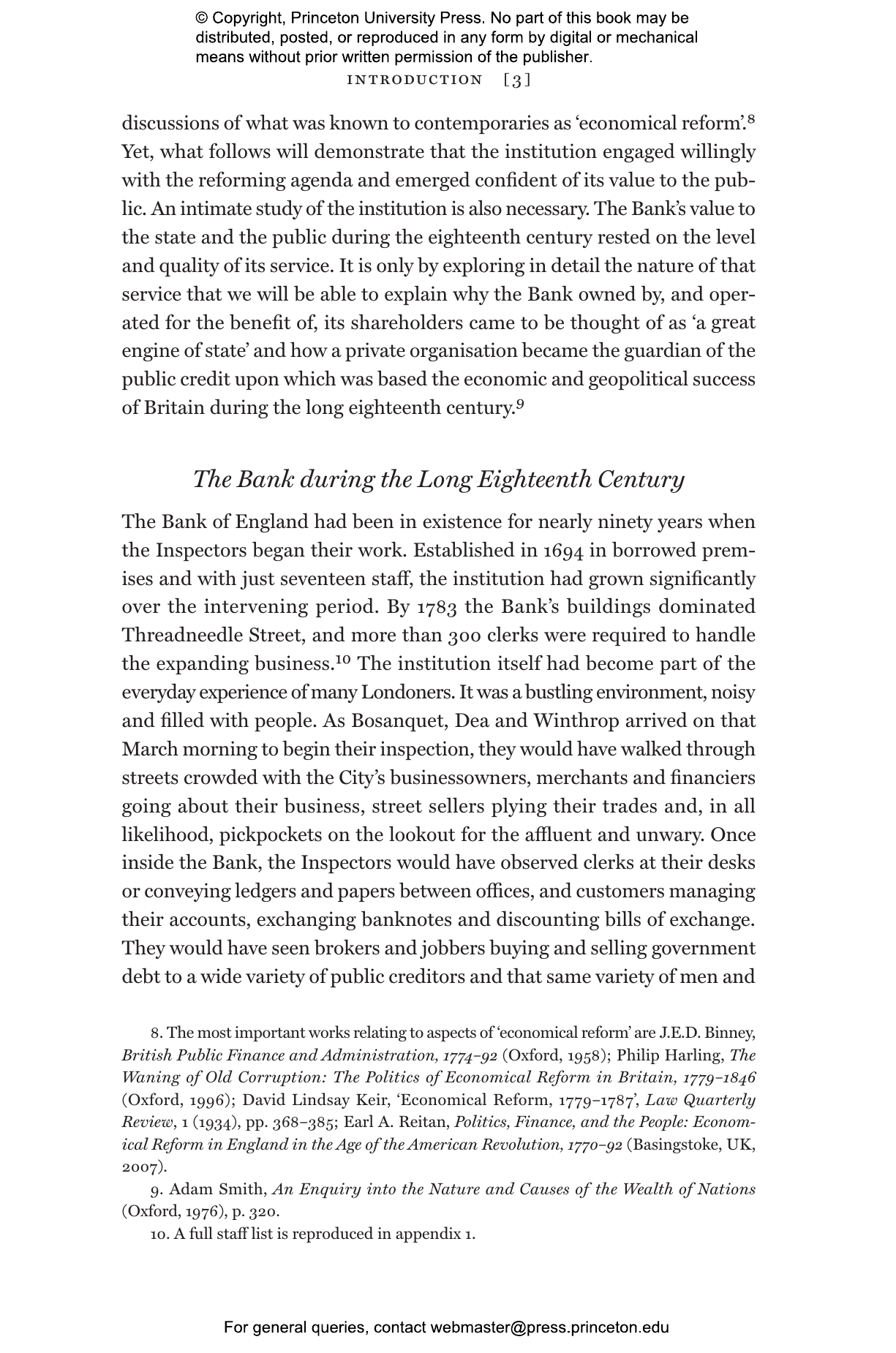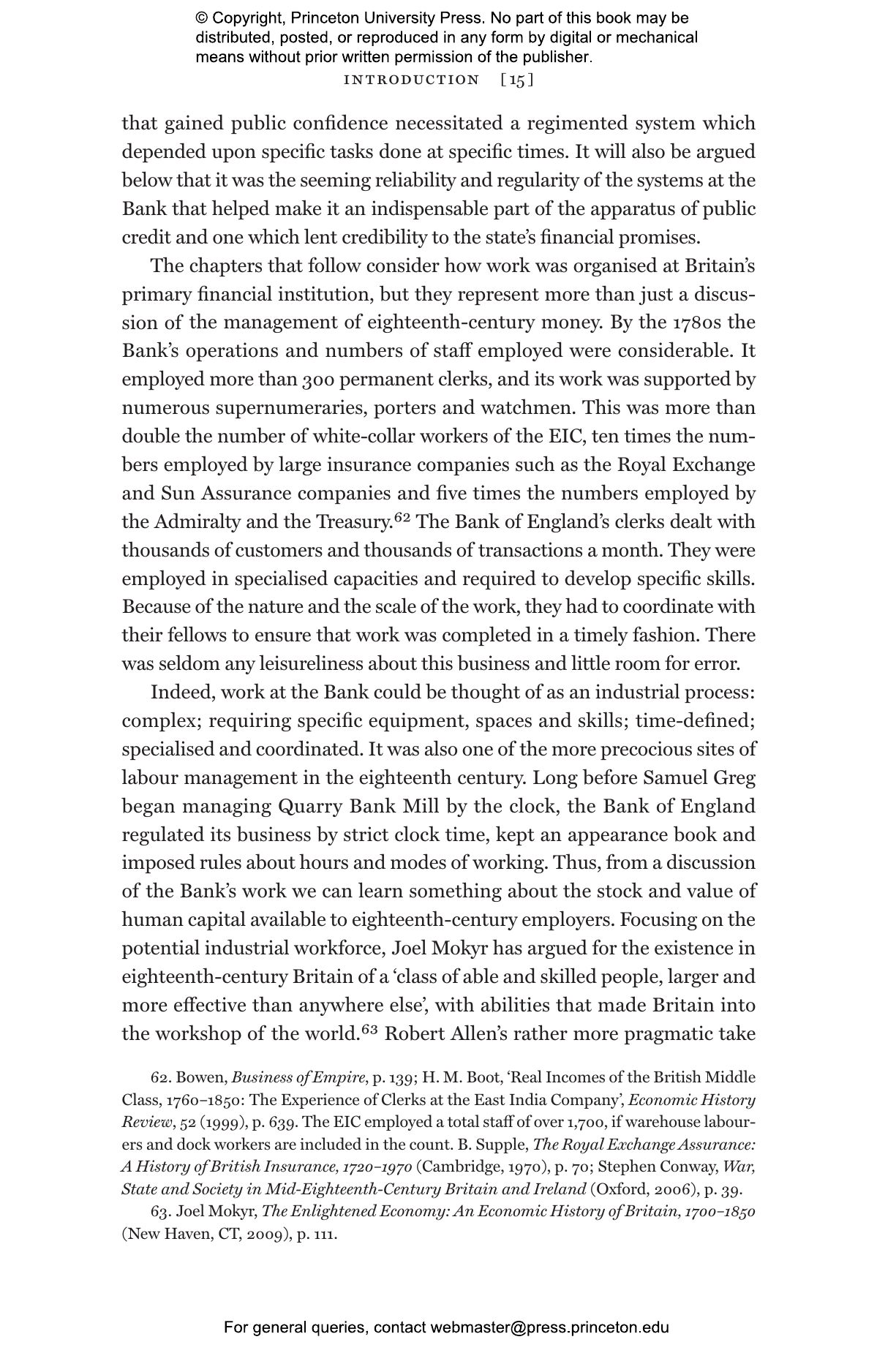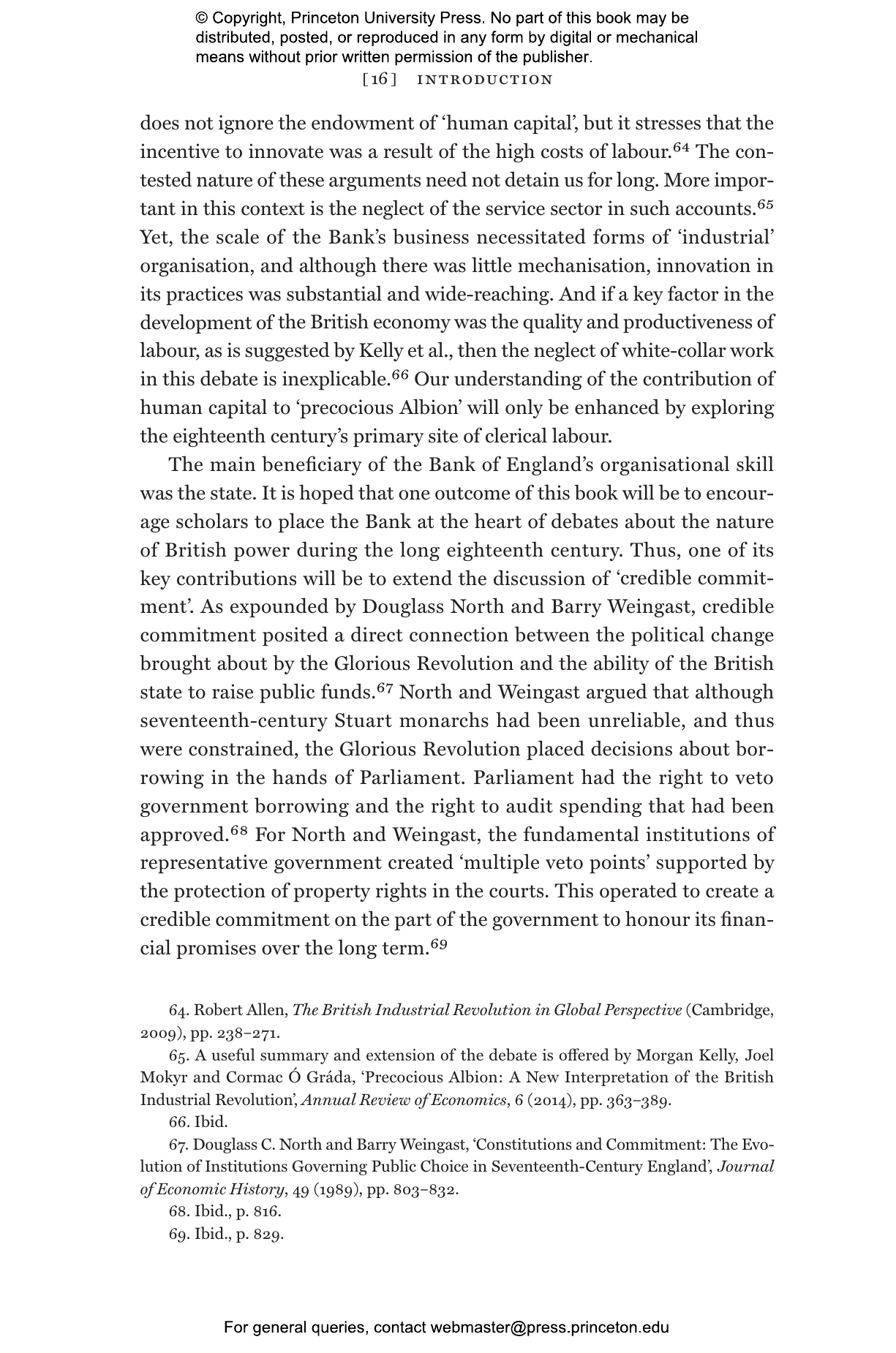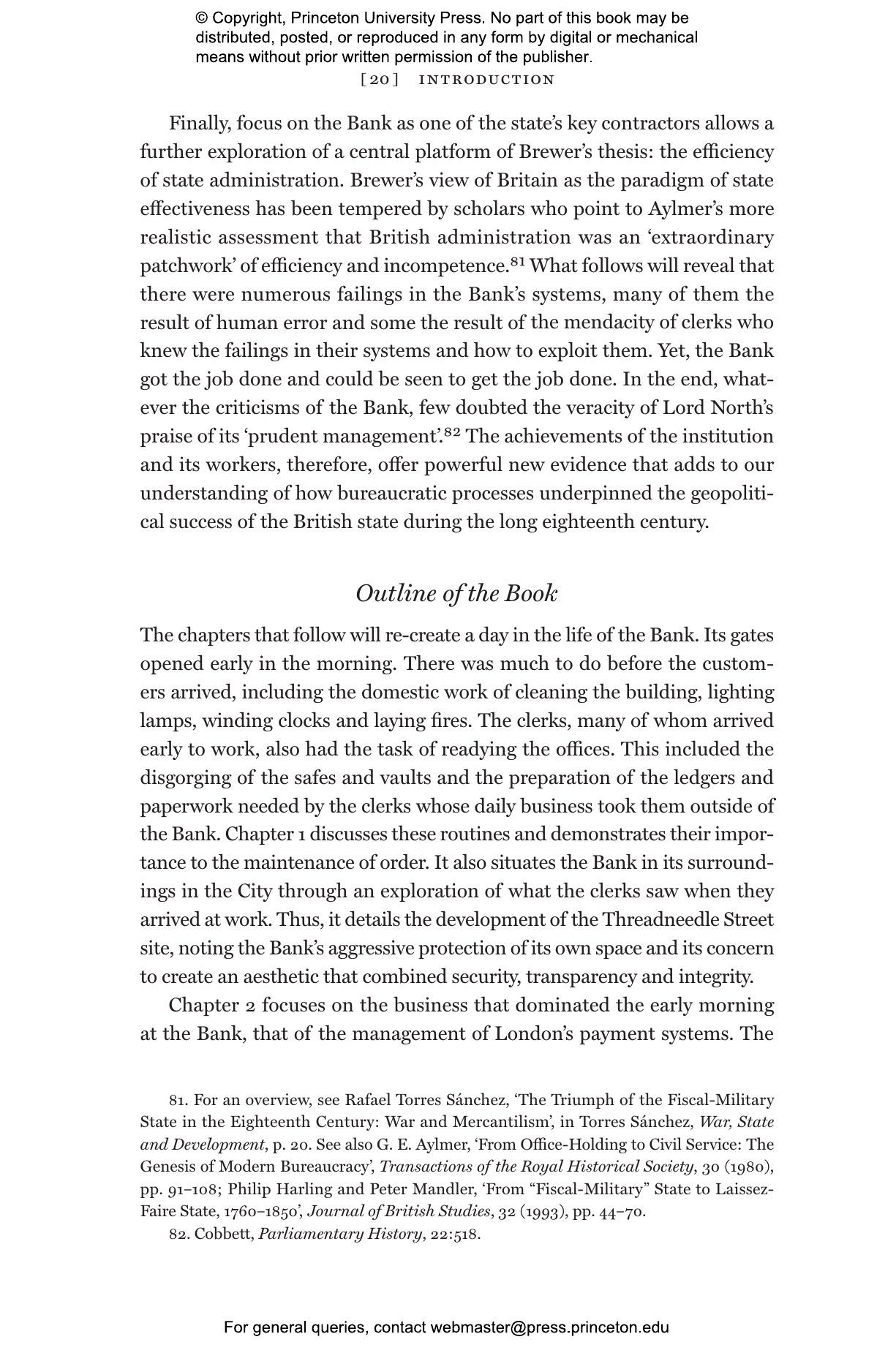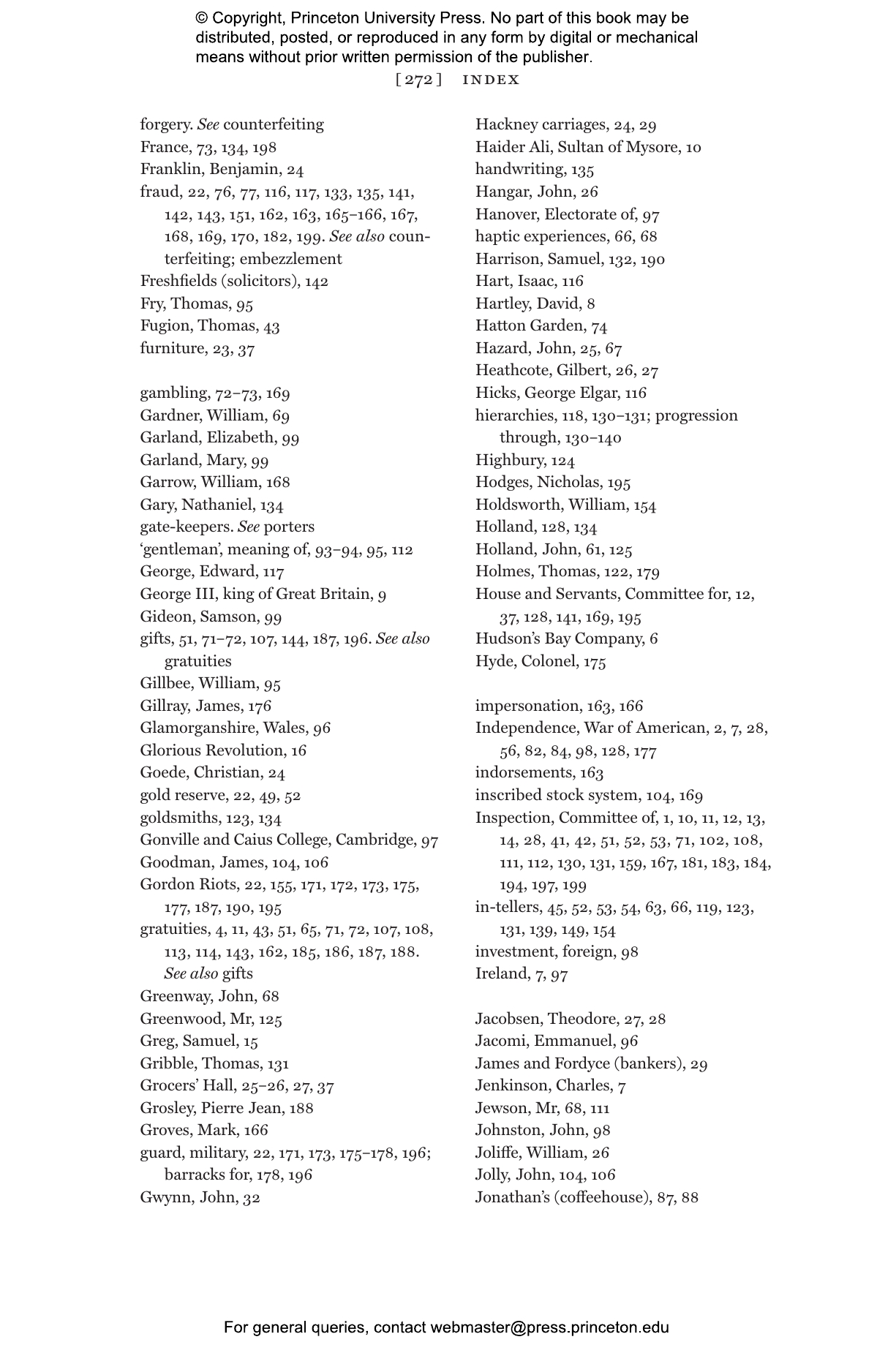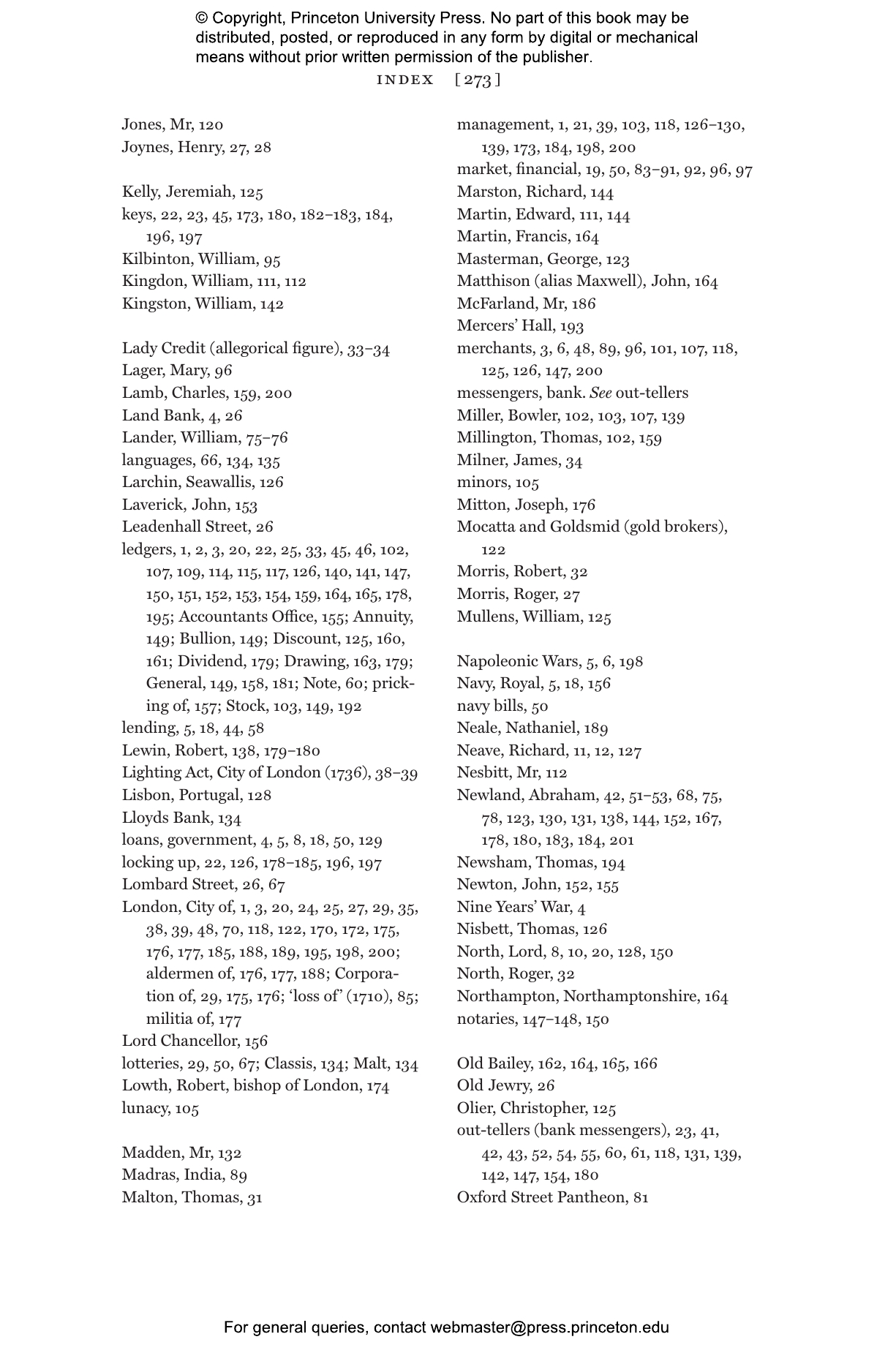The eighteenth-century Bank of England was an institution that operated for the benefit of its shareholders—and yet came to be considered, as Adam Smith described it, “a great engine of state.” In Virtuous Bankers, Anne Murphy explores how this private organization became the guardian of the public credit upon which Britain’s economic and geopolitical power was based. Drawing on the voluminous and detailed minute books of a Committee of Inspection that examined the Bank’s workings in 1783–84, Murphy frames her account as “a day in the life” of the Bank of England, looking at a day’s worth of banking activities that ranged from the issuing of bank notes to the management of public funds.
Murphy discusses the bank as a domestic environment, a working environment, and a space to be protected against theft, fire, and revolt. She offers new insights into the skills of the Bank’s clerks and the ways in which their work was organized, and she positions the Bank as part of the physical and cultural landscape of the City: an aggressive property developer, a vulnerable institution seeking to secure its buildings, and an enterprise necessarily accessible to the public. She considers the aesthetics of its headquarters—one of London’s finest buildings—and the messages of creditworthiness embedded in that architecture and in the very visible actions of the Bank’s clerks. Murphy’s uniquely intimate account shows how the eighteenth-century Bank was able to deliver a set of services that were essential to the state and commanded the confidence of the public.
Awards and Recognition
- A Financial Times Book to Read in 2023
"This is a model of economic history, acute, profound and diverting."—Ferdinand Mount, London Review of Books
"[Virtuous Bankers] is compelling and lively, and will please both academic and general readers. . . . Murphy’s thorough research sets a high standard for future work in this field."—Perry Gauci, Literary Review
"Brilliant."—Jesse Norman, The Spectator
"Fascinating. . . . [Murphy] makes the technicalities of financial history accessible and personal."—Martin Daunton, BBC History Magazine
"Murphy turns what could have been a dry bureaucratic history into a fascinating and engaging read. Above all, her book highlights the value of approaching the big questions in economic history with a sensitivity to the routines and rhythms of everyday life."—James Taylor, History Today
"The modus operandi of the Bank of England is described assiduously in [this] delightful new book."—Grant's Interest Rate Observer
"[Murphy] excels in putting this microhistory in the larger context of the bank's relationship with the British state and British economic history. . . . By situating the Bank of England in the contexts of London and Britain at large, Murphy paints it a lively, much-needed, and three-dimensional portrait that uncovers the unknown corners of this well-known bank."—Zhihui Zou, World History Encyclopedia
"Well-researched. . . . Murphy’s history is unique."—Kofi Adjepong-Boateng, Financial Times
"Murphy has produced an impressive historical study of the Old Lady of Threadneedle Street that makes a compelling case for why this particular period in its history is so important. Her book will be of interest not only to specialists, but also to anyone interested in how Britain’s financial system evolved."—Matthew Partridge, Money Week
"A highly readable, bottom-up account of the Bank of England’s operations towards the end of the 18th century. Murphy makes a day in the life of the bank come alive with its descriptions of street life in London and the navigation of bank clerks in the city and within the bank’s public spaces and private corridors."—Jane Knodell, Central Banking
“Meticulously researched and elegantly structured, Virtuous Bankers not only reveals as never before the inner workings of the eighteenth-century Bank of England, but also brings that key institution evocatively to life. There have been many books written about the Bank: this is one of the very best.”—David Kynaston, author of Till Time's Last Sand: A History of the Bank of England 1694–2013
“Extremely well-written and engaging. Rarely does one read an account of an historical institution that is this compelling. Murphy’s descriptions are so vivid that one leaves the book feeling almost like one has actually visited the eighteenth-century Bank oneself.”—Carl Wennerlind, Barnard College, Columbia University
“Anne Murphy draws on a unique cache of documents to provide an unusually detailed glimpse into the day-to-day functioning of the Bank of England from its cleaners and clerks to its directors. This thoroughly engaging volume enriches our understanding of both social and financial history of the eighteenth century."—Catherine Schenk, University of Oxford
“Today a device for committing to low and stable inflation, at its founding in 1694 the Bank of England was a device helping the state commit to repaying its debts. It worked so well, the Bank became central to Britain's rise to pre-eminence. Anne Murphy opens a window on to its day-to-day life in the eighteenth century, focusing especially on the period when the American Revolution changed everything. A book that should be read by anyone interested in the way some organisations become enduring national institutions.”—Paul Tucker, author of Unelected Power and Global Discord, and former central banker
“This is an interesting and fascinatingly written account of the Bank of England at the end of the eighteenth century. It is connected to, and illuminates, important debates in political and also financial history.”—Harold James, Princeton University
“Murphy is an authority on eighteenth-century London capital markets and institutions, and she brings the early history of the Bank to life in a lively and engaging account that encompasses the architecture, operations, management, governance, people, and, most importantly, the culture of the Bank of England in a crucial century in which England’s financial infrastructure played a huge role in its global reach and economic success.” —William Goetzmann, Yale University
“Thanks to Adam Smith, we know that the Bank of England was ‘a great engine of state’ for Britain in the eighteenth century. Now, thanks to Anne Murphy, who takes us through the daily operations of the Bank, we learn just how and why that great engine was put together and kept running well into the nineteenth century.”—Larry Neal, University of Illinois Urbana–Champaign






